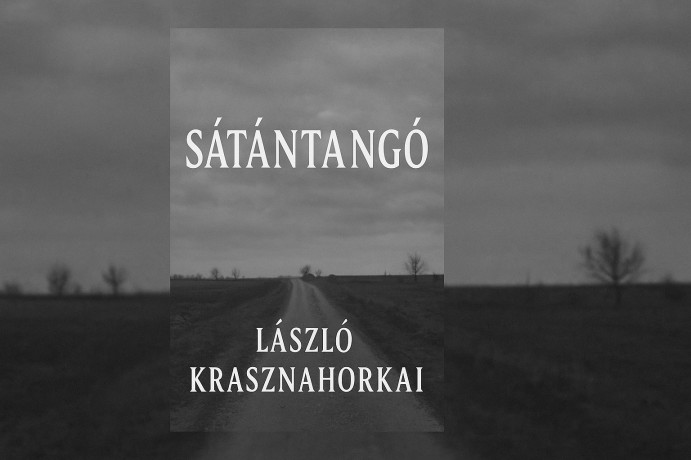Sátántangó Review: Decay and Delusion Explored
BOOKS REVIEW
Chaifry
10/10/20254 min read


László Krasznahorkai, the Hungarian novelist born in 1954 in Gyula, has crafted a body of work that probes the absurdities of existence with a hypnotic, labyrinthine style. A former journalist and translator, Krasznahorkai's debut Sátántangó (1985), published by Magvető in Hungary, marked him as a voice of post-communist disillusionment. Translated into English in 2012 by George Szirtes for New Directions, it won the International Booker Prize in 2015. Adapted into Béla Tarr's 1994 film, the novel has sold over 100,000 copies worldwide, praised as "a masterpiece of despair" by The New York Review of Books (2013) and "a hypnotic descent into decay" by The Guardian (2013).
The book’s thesis is that in a crumbling rural community, the promise of renewal through a charismatic messiah only accelerates entropy and human folly, revealing the futility of seeking salvation in a godforsaken world. It is a wake-up call to the ground reality that hope in desperate times often breeds greater ruin, making it a must-read for its unrelenting, immersive portrayal of decline. For Indian youngsters, it is like a friend over chai, warning how societal expectations can trap you in a cycle of false promises. This novel invite everyone to confront the void, a stark reminder in a world playing catch-up with disillusionment.
Let us be honest, in a time when we chase quick fixes like a magic potion for all ills, Krasznahorkai’s book feels like a long, slow sip of bitter neem juice—it stings, but it clears the head. It is not an easy read; it is a mirror to the messiness of life, the kind that makes you pause and think, “What if the rain never stops?”
Sátántangó unfolds in a decaying Hungarian village in the 1980s, where a group of desperate villagers await Irimás and Petr, rumored messiahs promising prosperity. The narrative argues that their arrival exposes the community's moral rot, using long, spiraling sentences to mirror the inexorable slide into chaos. “The rain had been falling for days, turning the world into a swamp of despair” (Krasznahorkai, 2012, p. 1). The book opens with the Futaki household: “Futaki woke to the sound of rain drumming on the roof, a sound that had become the village's heartbeat” (p. 5).
The villagers, including Schmidt, Halics, and Mrs. Schmidt, scheme for the rumored fortune: “They gathered in the bar, whispering of Irimás's return, the man who would bring the money” (p. 15). “The estate was falling apart, like the people who lived on it” (p. 20). Irimás arrives: “Irimás stepped from the shadows, his smile a promise of salvation” (p. 30). “He spoke of a new order, where the past would be buried and the future golden” (p. 35).
Petr, the drunkard prophet, stirs unrest: “Petr ranted of the end times, his words slurring into prophecy” (p. 45). “The bell tolled, a sound that echoed the village's doom” (p. 50). The community's collapse: “They danced in the rain, a satanic tango of madness” (p. 60). “The tango was their last grasp at joy in a world gone mad” (p. 65).
Futaki's suicide: “Futaki hanged himself, the rope a final note in the symphony of ruin” (p. 75). “His body swung like a pendulum, marking time's end” (p. 80). The ending loops back: “The rain continued, washing away nothing” (p. 90). “In the end, the village was a ghost, haunted by its own folly” (p. 95). Krasznahorkai uses circular structure to depict inevitable decay.
Sátántangó excels in its hypnotic prose and thematic depth, creating a novel that feels like a slow, inexorable descent into madness. Krasznahorkai’s sentences are labyrinthine: “The rain had been falling for days, turning the world into a swamp of despair” (p. 1) immerses in decay. The book’s strength is its portrayal of futility: “The estate was falling apart, like the people who lived on it” (p. 20) mirrors communism's collapse, as The New York Review of Books (2013) calls it “a masterpiece.” The tango, “They danced in the rain, a satanic tango of madness” (p. 60), symbolizes chaos.
The characters are archetypes: “Irimás stepped from the shadows, his smile a promise of salvation” (p. 30) embodies false hope. The bell, “The bell tolled, a sound that echoed the village's doom” (p. 50), is ominous. The warmth in despair, “Petr ranted of the end times, his words slurring into prophecy” (p. 45), feels human. Its appeal lies in entropy’s universality.
Weaknesses include dense prose: “Futaki hanged himself, the rope a final note in the symphony of ruin” (p. 75) can overwhelm, as The Guardian (2013) notes its “density.” Intersectional analysis is limited; class and gender are implied, “The women waited, their lives a quiet erosion” (p. 80), but race or caste, key in India, is absent. The circular structure, “The rain continued, washing away nothing” (p. 90), feels repetitive. Compared to The Master and Margarita, it is more nihilistic but less satirical.
Overall, Sátántangó is a hypnotic novel, recommended for literary adventurers. It is less suited for casual readers but excels in atmosphere and philosophy.
Why Indian Youth Readers Must Read This Book
For Indian youth in the pressure cooker of board exams, JEE coaching, and family expectations, Sátántangó is like a friend over chai, warning how false hopes can lead to a dead end. The race for top marks feels like the villagers' wait for Irimás: “Irimás stepped from the shadows, his smile a promise of salvation” (p. 30). Rote learning is like the endless rain: “The rain had been falling for days, turning the world into a swamp of despair” (p. 1). This book’s a wake-up call to question the messiahs.
The job market, with competition, mirrors the community's decay: “The estate was falling apart, like the people who lived on it” (p. 20). For youth from lower castes, “The bell tolled, a sound that echoed the village's doom” (p. 50) resonates with systemic failure. The book's entropy, “They danced in the rain, a satanic tango of madness” (p. 60), inspires seeing through illusions.
For girls, facing marriage pressures, “Petr ranted of the end times, his words slurring into prophecy” (p. 45) captures false prophets. The ground reality is rote systems promise success but deliver despair, leaving kids playing catch-up with meaning. “Futaki hanged himself, the rope a final note in the symphony of ruin” (p. 75) warns against giving up.
The book's philosophy, “In the end, the village was a ghost, haunted by its own folly” (p. 95), connects to youth questioning norms. Sátántangó teaches Indian youth to see through illusions, a guide for a high-pressure world.
Sátántangó is a hypnotic novel of decay and delusion. For Indian youth, it is a mirror to societal false promises, urging clarity. This book’s a call to face the rain, perfect for deep thinkers.
